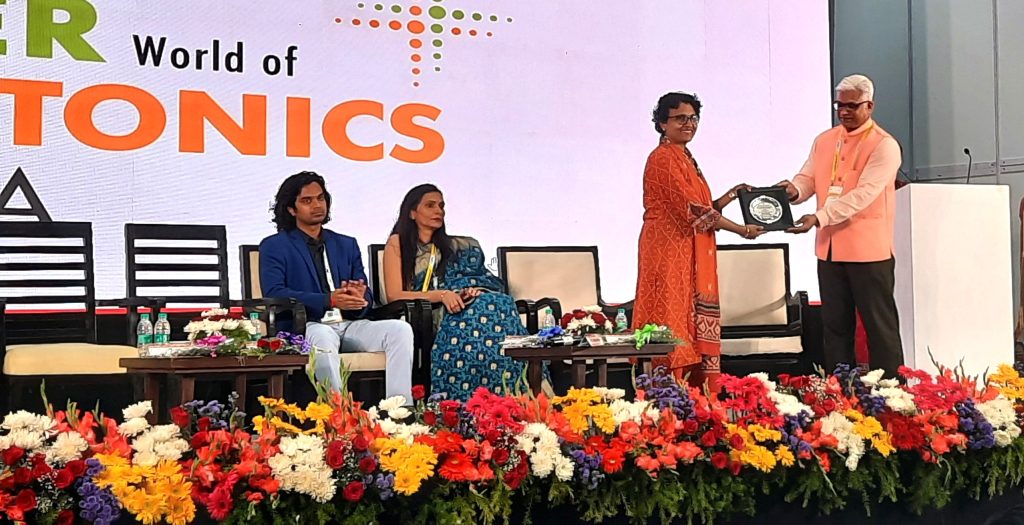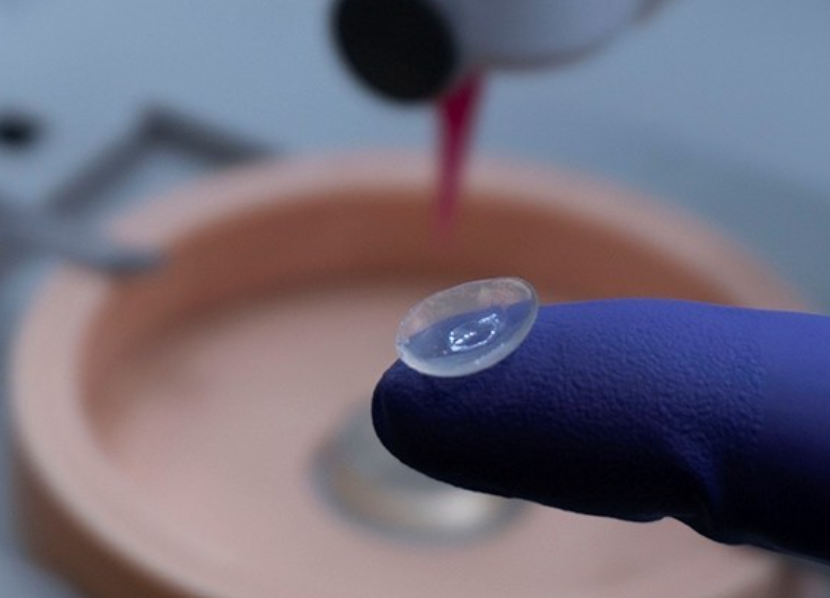India is home to nearly one and a half billion people, a vast potential market for 3D printed healthcare applications.
3D Printing Industry visited the Additive Manufacturing Society of India’s (AMSI) conference in Bangalore to learn more about the use of additive manufacturing in the world’s second most populated country. At AM 2023, we heard from medical experts how they hope technology could change the lives of millions.
“Incorporating 3D printing technologies in the healthcare sector is a game-changer. It has the potential to transform many lives by providing affordable, customized medical devices and solutions to millions of patients,” said Dr. Anil Kumar P R, Scientist, Biomedical Wing, Sree Chitra Tirunal Institute for Medical Sciences and Technology (SCTIMST).
Dr. Kumar explained that in India, the healthcare sector adopting 3D printing at a rapid pace. Mostly, it is used for orthopedic and dental applications with metal 3D printed parts. Polymer 3D printing is also on the rise.
This article will provide insights into the panel discussion addressing the latest developments of 3D printed biomedical applications: materials, technologies, adoption, standards and regulations.
 From left to right: Alok Medikapura Anil, Dr. Suman Singh, Dr. Shiny Velayudhan and Dr. Anil Kumar P R. Photo by 3D Printing Industry.
From left to right: Alok Medikapura Anil, Dr. Suman Singh, Dr. Shiny Velayudhan and Dr. Anil Kumar P R. Photo by 3D Printing Industry.
Materials as the building blocks in medical 3D printing
Dr. Shiny Velayudhan, Scientist ‘E’, Biomedical Technology Wing, SCTIMST says the focus of medical 3D printing can be broadly divided into two categories: 3D printing of implants and bioprinting, which involves 3D printing with living cells. For load-bearing applications, clinicians opt for metal, currently titanium. Clinicians also work with ceramics, which are biocompatible materials that are ideal for 3D printing implants and other medical devices that need to be integrated into the body. Some common ceramic materials used in medical 3D printing include TCP, bio black, or hydroxyapatite.
According to Dr. Velayudhan, these ceramic materials are not very strong, which is unsuitable for high load-bearing applications. As a result, these materials are employed for maxillofacial applications. “Clinicians are looking for materials that are shapeable, which would be easier to work with the scalpel. Consequently, they prefer materials that are composite, either ceramic or polymer,” explains Dr. Velayudhan.
Bioprinting is an emerging category within medical 3D printing. The “best material,” according to Dr. Velayudhan, is collagen, noting it is insoluble in water and can be difficult to work with. Using an acidic medium can overcome some challenges here, she adds. “Regarding bioprinting, we print with cells, and cells die when the pH is above or below 7.3 to 7.8. Thus, collagen cannot be directly used as a printing medium. We have to work with denatured collagen, which can be challenging. So, clinicians modify the gelatin and use it as a medium for bioprinting,” said Dr. Velayudhan.

Medical 3D printing: technologies and adoption
As in the aerospace sector, 3D printing has “proved its mettle” for orthopedics and dental applications, says Dr. Suman Singh, Principal Scientist & Head, MSSA, Central Scientific Instruments Organization (CSIR-CSIO), Advisor at Indian Women in 3D Printing (IW3DP). She says, “Clinicians are eager to use customized implants created using 3D printing materials and technologies. But on the flip side, some clinicians are reluctant because they don’t want to go into the nitty gritty of any testing validations, regulations, etc. So, unless we prepare ourselves for such phases, it is going to be very difficult for the adoption and commercialization of these technologies.”
Dr. Singh believes bioprinting is a blooming area, but at present, it is “very nascent.” According to her, “the wider 3D printing industry is not that much explored in the Indian market. Reason being, there are no action plans, government policies, regulations, etc.,” she argued. As a result, the adoption of 3D printing, whether it is in biomedical or any other vertical won’t be possible without proper awareness and action plans.
“We need to go deeper into the engineering side to actually make tissue engineering possible, which is the science behind engineering a cell to become a tissue and then potentially multiple tissue types. Adoption and awareness of 3D printing technologies in the medical sector has the potential to end organ transplants that exist in the world,” said Alok Medikepura Anil, Co-Founder and Director at Next Big Innovation Labs (NBIL).
Manufacturing on Demand
Regarding materials, 3D printers and their capabilities, panelists spoke about PEEK, which is a material that has biocompatibility and is already approved. “This material can be used for certain implants and rotating structures that could be 3D printing using regular 3D printers right from FDM technologies, SLA, SLS, and so forth,” said NBIL’s Medikepura. “What we a company, deploy for bioprinting is a pneumatic-based extrusion system, where the raw material could be in the form of pellets, or it could be in the form of semi-liquid material that is pneumatically controlled by a system to offering precision.”
Need for standards and regulations
Dr. Velayudhan argued, “When experimenting, us clinicians refer to ISO and [Organisation for Economic Co-operation and Development] OECD standards, but for 3D printing especially for bioprinting, we do not have any set standards. We have to refer to research papers instead, which many industries and regulatory bodies don’t take into consideration, they ask us which standard is it? Thus, we are again stuck there. As a result, we need policies so these processes can be streamlined.”
As for bioprinting, clinicians are currently challenged by scale. “There has to be a technology that allows for scaling up to the human anatomical size,” she said. “To do this, the employed bioprinter must be very fast, as most of them are very slow, which is a challenge because living cells cannot be printed for hours at a time. Standards and regulations are the foundation for a safe and effective bioprinting future. Without them, we are building on sand. We need clear standards and regulations to guide the development and use of bioprinted tissues and organs and to support the development of new bioprinting technologies.”
Medikepura said, “India needs to take a leadership position in this emerging technology, the field of additive manufacturing. For this to happen, regulatory policies have to be in place ready for mainstream consumer adoption happens.”
NBIL’s Co-Founder observed that the Central Drugs Standard Control Organization (CDSCO) and medical councils are not as well equipped to handle a biomaterial that can be approved for use inside a human. He noted many researchers who have developed innovative biomaterials are struggling with CDSCO approval. One positive sign is that the U.S. Food and Drug Administration (FDA), published the Modernization Act in December 2022, which is allowing pharmaceutical companies to start looking at computer-based models, such as artificial intelligence (AI) vs. models or even alternatives to animal testing, such as human-like tissues that can be developed in the lab using bioprinters.
“Pharma companies have received a green light from the larger regulatory body to go ahead and use such models for development of the new vaccines, for example, which allows for fast-tracking the drug development process. It saves both a lot of taxpayer money as well as the time to market for critical drugs in the market,” concluded Medikepura.
You might also like:
3D Systems partners with Klarity to expand access to 3D printed patient-specific radiotherapy VSP Bolus offering : Launched last year, 3D Systems’ VSP Bolus offering allows clinicians to 3D print medical devices for cancer patients at personally tailored thicknesses, reducing air gaps between instruments and patients. VSP Bolus is advertised as the only solution on the market to provide a full design and production service based on the patient’s specific treatment plan.
* This article is reprinted from 3D Printing Industry. If you are involved in infringement, please contact us to delete it.
Author: Ada Shaikhnag

Leave A Comment